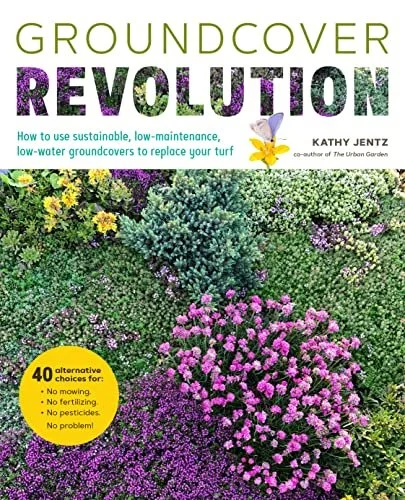In England, a movement titled “No Mow May” is encouraging homeowners to let their grass grow in the spring to create habitat and forage for early season pollinators and to help the environment. In the United States, a growing chorus of gardeners and landscape professionals is questioning the wisdom of grass lawns and calling for alternatives like groundcovers.
In a 2019 report on the impact of lawns, the Audubon Society concluded: “The endless mowing, blowing, fertilizing, and irrigation involved in turf maintenance results in a hefty climate footprint. To make matters worse, the country’s 40 million acres of lawn, our largest irrigated crop, offer little to birds and other wildlife. Replacing your lawn with native trees, shrubs, and groundcovers not only can slash your landscape’s greenhouse gas emissions but also coax birds back to your garden and look great, too.”
The Audubon report suggested a gradual chipping away at lawns by enlarging existing planting beds and replacing a patch of turf each year.
In Groundcover Revolution, urban gardener Kathy Jentz introduces forty alternatives to the traditional grass lawn, from the evergreen bugleweed and perennial pussytoes to the easy-to-grow stonecrop and weed-suppressing dwarf comfrey. The right groundcover will not only provide an attractive setting around a home, but nourish troubled soils and crowd out unwanted plants.

